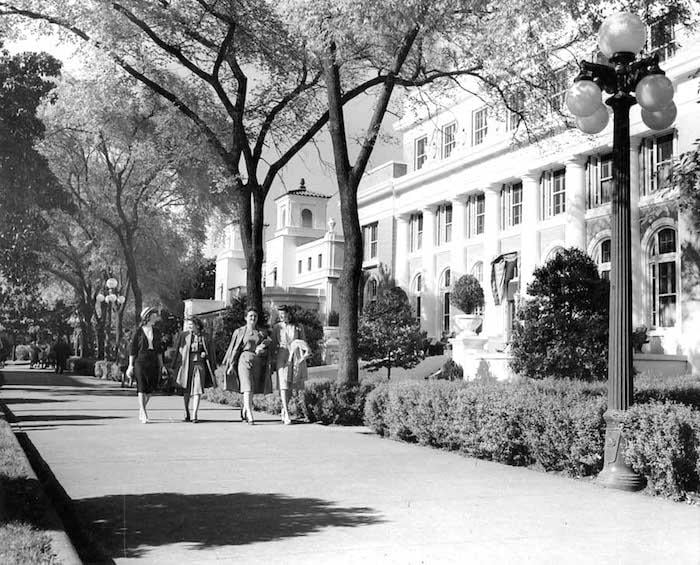
Long before thoughts turned to "national parks," a small town in Arkansas known as Hot Springs was drawing visitors desiring to relax in, well, the hot springs there. Today you can still find a good soak in Hot Springs National Park, but there's more to this place than hot water.
The national park is found in the Zig Zag Mountains, which is the source for 143-degree spring waters that contain trace amounts of silica, calcium, bicarbonate and other dissolved minerals. And, for trivia fans, they say the water that comes to the surface in the park's hot springs is more than 4,000 years old.
Not only did Native Americans partake in an occasional dip, but legend has it that Spanish explorer Hernando DeSoto took a soak back in 1541. Even President Jefferson was interested in the hot springs, having dispatched the Dunbar-Hunter Expedition to the region in 1804.
The location was added to the National Park System in 1921, though it was established as Hot Springs Reservation back on April 20, 1832. Today eight historically and architecturally significant bathhouses compose Bathhouse Row, a National Historic Landmark District.
And, of course, you can still take a soak, in one of the tubs at the Buckstaff Bath House, which has been in continuous operation since 1912, and follow it up with a massage.
But the national park is not simply a place to soak your weary bones. The National Park Service, in an effort to both generate a little return on the facilities here and to see the historic buildings maintained, in recent years has been leasing out some of the buildings.
Back in 2013 the Superior Bathhouse -- which was built in 1916, closed in 1983, gutted in the 1990s when its fixtures were removed and its plaster wallcoating removed, and rehabilitated in 2008 -- was turned over to a microbrewery run by Vapor Valley Spirits, Inc. And in 2017 the park signed a lease to have the historic Hale Bathhouse turned into a boutique hotel, though contractual matters have held up the project. Those behind the hotel proposal hope to be open for business by year's end.
According to the Park Service, the first bathhouses at Hot Springs "were crude structures of canvas and lumber, little more than tents perched over individual springs or reservoirs carved out of the rock. Later, businessmen built wooden structures, but they frequently burned, collapsed because of shoddy construction, or rotted due to continued exposure to high temperatures and humidity."
A good place to start your visit of Hot Springs National Park is the Fordyce Bathhouse, which operated from 1915 until 1962, when it closed due to declining business. It remained vacant until reopening as the park visitor center in 1989. Now you can watch an orientation movie of the park and take a tour of the building, which was the only bathhouse to have a bowling alley. Today you can still see the Fordyce Spring and the original Otis elevator mechanism.
The Bathhouse Row you see today consists of eight bathhouse buildings that were constructed between 1892 and 1923, the park staff notes. This area along with the Grand Promenade was designated as a National Historic Landmark District in 1987. Along with finding a good 20-minute soak in the Buckstaff Bathhouse, you can soak in pools filled with hot spring water or have a modern-day spa experience at the Quapaw Baths and Spa.

Bathhouse Row in the 1940s. A row of evenly-spaced magnolia trees was planted along the east side of Central Avenue, between the road and the main sidewalk. In 1922, the young trees had matured to the point that National Park Service Director Stephen Mather called this walkway the Magnolia Promenade./NPS
But you might want to hold off on the soak until after you take a hike. The park has 26 miles of hiking trails, ranging from the Fountain Trail that runs just 528 feet to the Sunset Trail, which is the park's longest at 10 miles. Park staff say the trail passes by the highest elevation in the park as well as Ricks Pond, and also makes its way through the most remote areas of the park. You can expect to find quite a variety of wildlife in these less frequented pockets, which serve as refuges for such seldom seen local species as wild turkey and white-tailed deer, most common in the fall months. Wildflowers are plentiful along the trails in late spring, summer, and fall.
There's also a little dark history at Hot Springs National Park: On March 12, 1927, Ranger James Alexander Cary was killed by bootleggers while patrolling on West Mountain. He was the first Park Service ranger killed in the line of duty. No one was ever convicted of his murder.
Trivia fans should know that Hot Springs, Arkansas, was the premier baseball spring training site from the 1880s-1940s. The Chicago White Stockings, Cincinnati Reds, Pittsburgh Pirates, Boston Red Sox and others came to soothe their aching muscles at the many bathhouses using Hot Springs National Park water.
So, whether you go to take a hike, study some major league baseball history, or enjoy the brewpub, Hot Springs National Park can make a great three-day escape.



Add comment